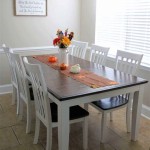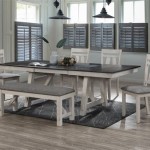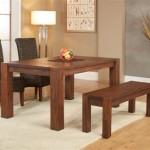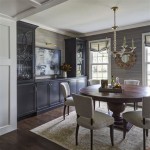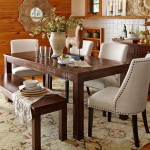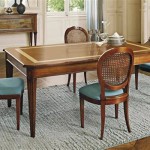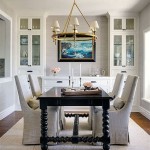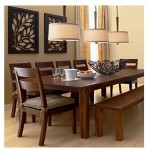Dining Room Prints for Wall Decoration: A Comprehensive Guide
The dining room, traditionally a space for nourishment and social interaction, holds a significant place within the home. Beyond its functional purpose, the dining room presents an opportunity to express personal style and create an inviting atmosphere. Wall decor, particularly prints, plays a crucial role in achieving this desired ambiance. Selecting the right prints can transform a dining room from a mere eating space into a focal point of artistic expression and visual appeal.
The impact of wall art extends beyond mere aesthetics. Prints can evoke specific emotions, complement the existing décor, and even influence the perceived size and shape of the room. Thoughtful selection involves considering various factors, including the room's color scheme, the available space, the desired mood, and the personal preferences of the homeowner. The objective is to create a cohesive and harmonious environment that enhances the dining experience.
Understanding the Variety of Dining Room Prints
The market offers an extensive array of prints suitable for dining rooms, each with its unique characteristics and appeal. Categorizing prints based on subject matter, style, and medium provides a framework for navigating the diverse options available.
One common categorization is based on subject matter. Food-related prints, such as still life depictions of fruits, vegetables, or culinary scenes, are a classic choice for dining rooms. These prints reinforce the room's purpose and create a visual connection to the act of dining. Landscapes, featuring natural scenery or pastoral settings, offer a sense of tranquility and can visually expand the space, particularly in smaller dining rooms. Abstract prints, characterized by non-representational forms and colors, provide a modern and sophisticated touch. They can introduce a sense of dynamism and visual interest, especially in minimalist or contemporary dining rooms. Botanical prints, showcasing detailed illustrations of flowers, plants, or herbs, bring a touch of nature indoors and create a refreshing and vibrant atmosphere.
Another important classification is based on artistic style. Traditional prints often feature classic subjects and techniques, such as oil paintings or engravings reproduced as prints. These prints evoke a sense of timeless elegance and formality. Modern prints encompass a wide range of contemporary styles, including abstract expressionism, pop art, and minimalist art. They offer a more contemporary and edgy aesthetic. Vintage prints, including antique maps, advertisements, or posters, add a touch of nostalgia and historical charm. These prints can serve as conversation starters and create a unique and personalized ambiance. Furthermore, consider the color palette of the artwork. Complementary colors create harmony, while contrasting colors add visual interest and drama. The colors in the print should tie into the existing color scheme of the dining room to create a cohesive look.
The medium of the print also influences its appearance and durability. Canvas prints, created by printing images onto canvas fabric, offer a textured and gallery-like feel. They are often stretched over a wooden frame and can be displayed without additional framing. Paper prints, the most common type of print, are available in various paper weights and finishes. They require framing to protect them from damage and enhance their visual appeal. Metal prints, created by infusing images onto aluminum sheets, offer a sleek and modern look. They are durable and water-resistant, making them suitable for areas with high humidity. Acrylic prints, created by printing images onto acrylic sheets, offer a vibrant and glossy finish. They provide excellent clarity and depth, making colors appear more vivid.
Selecting Prints that Complement Your Dining Room Décor
Choosing prints that harmonize with the existing décor is crucial for creating a cohesive and aesthetically pleasing dining room. This involves considering the room's color scheme, furniture style, and overall design aesthetic.
The color scheme of the dining room serves as the foundation for selecting complementary prints. If the room features a neutral color palette, such as beige, gray, or white, prints with bold colors or intricate patterns can add a pop of visual interest. Conversely, if the room already has a vibrant color scheme, prints with more subdued colors or simpler designs may be more appropriate to avoid overwhelming the space. When choosing prints with multiple colors, ensure at least one color ties in with the color scheme of the dining room. This creates a sense of visual harmony and cohesiveness.
The style of furniture also influences the choice of prints. In a traditional dining room with ornate furniture and classic details, prints with traditional subjects, such as landscapes or still life paintings, may be a suitable choice. In a modern dining room with sleek furniture and minimalist designs, abstract or geometric prints can complement the clean lines and contemporary aesthetic. In a rustic dining room with wooden furniture and natural textures, botanical prints or vintage prints can enhance the warm and inviting atmosphere. The style of the prints should complement, not clash with, the overall design theme of the dining room.
Consider the size and scale of the prints in relation to the size of the wall and the surrounding furniture. A large, statement print can serve as a focal point in a spacious dining room, while a smaller print or a grouping of prints may be more appropriate for a smaller room. When hanging multiple prints, ensure they are arranged in a balanced and visually appealing manner. Consider using a gallery wall arrangement to showcase a collection of prints with a unified them, use of similar frames, and consistent spacing between the pieces.
Strategic Placement and Framing of Dining Room Prints
Even the most carefully selected prints can lose their impact if placed improperly or framed inadequately. Strategic placement and appropriate framing are essential for enhancing the overall aesthetic appeal of the dining room.
The placement of prints should be carefully considered in relation to the room's architecture, furniture placement, and lighting. A common placement is above the buffet or sideboard, creating a focal point that draws the eye. Prints can also be placed above the dining table, but ensure they are hung at a height that does not obstruct the view or interfere with conversations. Avoid placing prints in direct sunlight, as this can cause fading and damage over time. Consider using track lighting or spotlights to highlight the prints and enhance their visual impact. Always ensure that lighting does not create glare on the glass or acrylic of the frame, as this can detract from the viewing experience.
The choice of frame can significantly impact the appearance of the print. Select a frame that complements the style of the print and the overall décor of the dining room. A simple, minimalist frame may be appropriate for a modern print, while a more ornate frame may be suitable for a traditional print. The color and material of the frame should also be considered. A wooden frame can add warmth and texture, while a metal frame can offer a sleek and contemporary look. The width of the frame should be proportional to the size of the print. A wide frame can overwhelm a small print, while a narrow frame may not provide enough visual support for a large print.
In addition to framing, consider using mats to enhance the appearance of the print and protect it from damage. A mat creates a visual buffer between the print and the frame, preventing the print from touching the glass or acrylic. The color and width of the mat should be chosen carefully to complement the print and the frame. A neutral mat, such as white or off-white, is a versatile choice that works well with most prints. The width of the mat should be proportional to the size of the print and the frame. A wide mat can create a more formal and elegant look, while a narrow mat can offer a more contemporary and minimalist feel. The backing of the print should be acid-free to prevent discoloration and degradation over time.
Ultimately, the selection, placement, and framing of dining room prints should reflect the personal taste and style of the homeowner. By carefully considering the various factors outlined above, it is possible to create a dining room that is both visually appealing and conducive to enjoyable dining experiences. The artwork should enhance the overall ambience of the room, making it a more pleasant and welcoming space for family and guests.

Dining Room Wall Decor Kitchen Prints The Best Memories Are Made Gathered Around Table Farmhouse Printable Art Etsy

Kitchen Prints Set Of 3 Dining Room Decor Eat Drink And Be Happy Unframed Etsy

4 Piece Framed Architecture Wall Art Prints Home Decor For Living Room Dining Entryway 20 In X 28 Xz W2078130255 The

Dining Room For Kitchen Wall Art Sign Canvas Prints Bless The Food Before Us Decoration Rustic Farmhouse Home Living Bedroom Decor

Beige Kitchen Prints Dining Room Set Of 3 Wall Art In The Home Decor Neutral Print Food Etsy

Kitchen Wall Art Dining Room Prints Farmhouse Poster Decor Set P841 Ebay

Rustic Farmhouse Kitchen Art Prints Set Of 6 Black And White

3 Pieces The Best Memories Are Gathered Around Table Quotes Posters Prints Quote Wall Art Canvas Painting For Dining Room Decor With Inner Frame

Unbranded 4 Piece Plastic Black Framed Botanical Fern Wall Art Decor For Living Room Dining Entryway 20 In X 28 Xz W2078130254

Nordic Quotes For Kitchen Dining Room Wall Art Prints

